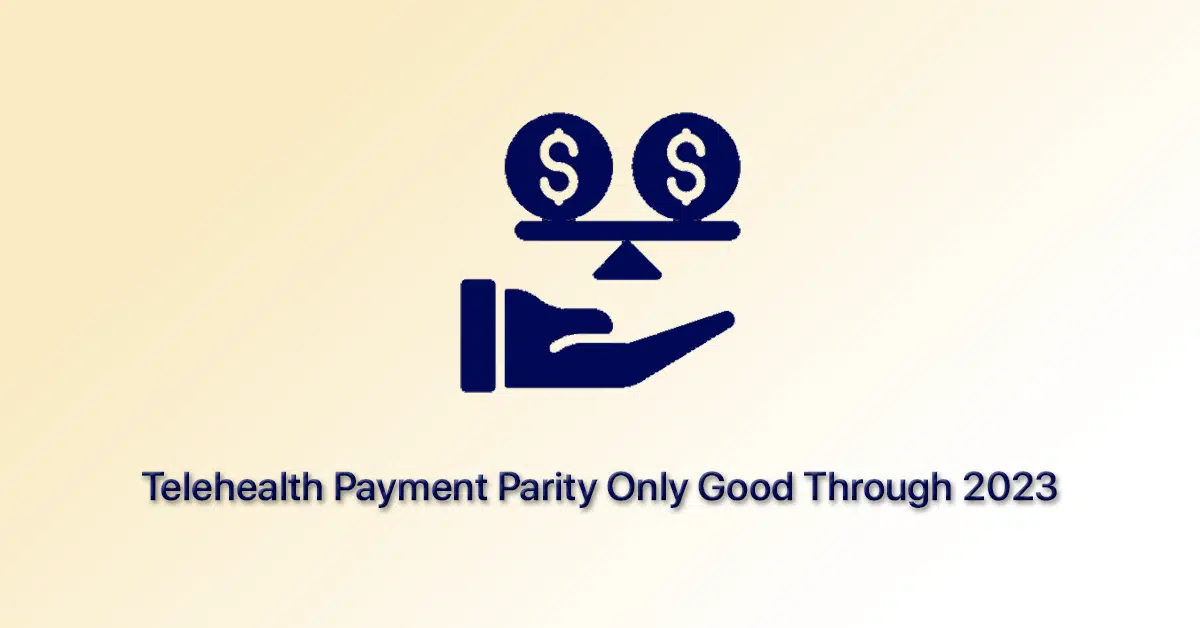The omnibus spending bill continues telehealth waivers for two years past the PHE, but was silent on the issue of reimbursement.
The federal government extended telehealth waivers for two years, but the current higher rate of reimbursement is in place only through the end of this year. During the public health emergency, the Centers for Medicare and Medicaid Services reimburse providers at the non-facility rate, which creates payment parity between an in-person and a telehealth visit.
Telehealth flexibilities originally got a 151-day extension, and then a two-year addition after the end of the public health emergency. If the PHE ends in mid-April as projected, health systems and other providers can expect telehealth waivers to continue through at least the end of 2024.
But current reimbursement rates last only through 2023, according to the senior vice president for public policy for the American Telemedicine Association. After that, rates could return to lower pre-pandemic levels. More is expected to be known when CMS releases the annual physician fee schedule.
“Possibly for 2024, (based on) the physician fee schedule, there’s a chance it goes back down,” the vice president said.
WHY THIS MATTERS
Many hospitals and health systems relied on telehealth during the height of the COVID-19 lockdown. Executives made investments in technology and infrastructure for telehealth as the number of people using virtual care climbed.
One big hurdle over its continued use is the question of payment parity. The recently-passed omnibus bill took care of a lot of regulatory and legislative hurdles regarding telehealth, but was silent on the issue of reimbursement.
Legislative action has been lacking on this issue because the authority to set reimbursement is done through existing CMS authority. The biggest change that occurred during the pandemic for CMS to determine, that Congress has deferred, is this higher rate of reimbursement generally.
CMS makes payment decisions in the annual physician fee schedule. Providers will get notice around July 4 when the agency releases its draft proposal of rates and other policies. Stakeholders will then get 90 days to respond before CMS releases its final rule that would take effect on January 1, 2024.
Medicare added over 100 billing codes for the duration of the public health emergency. Telehealth visits billed to Medicare are currently paid at the same fee-for-service rate as an in-person visit.
The current payment parity is based on facility rates. Prior to the pandemic, telehealth was reimbursed on a limited basis, for example, when the person receiving the service was in a designated rural area or when they left their home and went to a clinic, hospital or other medical facility for the service.
During the pandemic CMS initiated higher reimbursement at non-facilities, such as a patient’s home. CMS will continue this higher rate of Medicare reimbursement for 2023.
Commercial insurers are regulated by state law. Half of states have passed payment parity laws. In the other half, commercial plans vary widely regarding what they will cover and the rate at which they’ll reimburse. This is true even for the same insurer across states.
Even major players will vary significantly from state to state. CMS has removed Medicare restrictions on providing services across state lines, but this doesn’t negate state law.
THE LARGER TREND
Whatever CMS decides for reimbursement after 2023, telehealth is here to stay.
“Patients want to continue to have it, providers want to deliver it,” the vice president said. “We’ve got the positive momentum behind this.”
In 2020, telehealth use exploded in medical encounters and it’s still 65% times higher than numbers from before 2020. However, telehealth utilization has slowed by close to 4% as of October 2022, according to a monthly telehealth regional tracker.
The question of reimbursement is critical, and there are other federal and state impediments to be worked out.
The ATA is supporting the continued higher rate of non-facility reimbursement. It also supports flexibility in negotiated rates between payers and providers in value-based contracts that don’t depend on fee-for-service reimbursement.
For More Information: https://www.healthcarefinancenews.com/news/telehealth-payment-parity-only-good-through-2023



